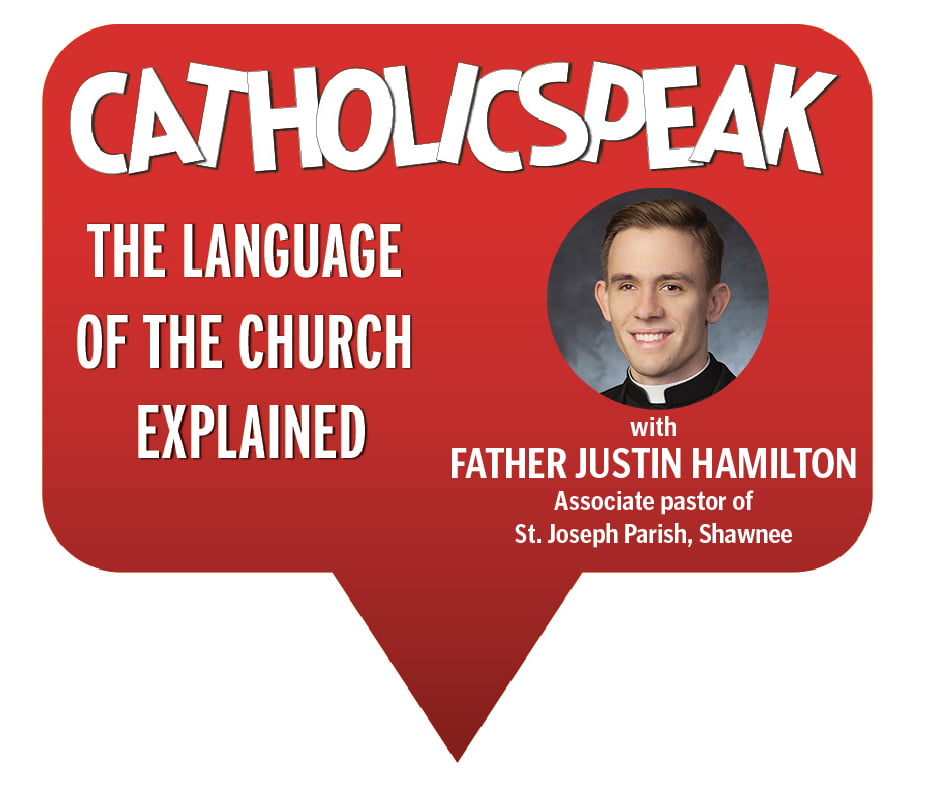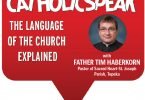
by Olivia Martin
olivia.martin@theleaven.org
KANSAS CITY, Kan. — On Aug. 5, national think-tank Pew Research Center released new information on the number of U.S. Catholics who believe in the real presence of Christ in the Eucharist. Their research shows 69 percent of U.S. Catholics believe the bread and wine distributed during Communion (the Eucharist) are just symbols of Jesus’ body and blood.
And 43 percent think the church teaches the bread and wine are just symbols of Christ.
But what is the truth? What does the church actually teach?
The Leaven spoke with Father Justin Hamilton, associate pastor at St. Joseph Parish in Shawnee and chaplain of Bishop Miege High School in Roeland Park, to get the facts.
Q. What is the “Real Presence”?
A. The real presence is the belief that Jesus Christ himself is physically present in the Eucharist — that it’s his body, blood, soul and divinity.
Q. Isn’t the Eucharist just a symbol of Christ’s sacrifice?
A. No, the Eucharist is not a symbol.
“Whenever a piece of bread and wine is consecrated validly at Mass,” explained Father Justin, “that really becomes Jesus, not just a symbol of Jesus. That’s why we call it the ‘real presence,’ indicating that Jesus is really, truly right there in front of you and with you in the form of that bread and in that wine.”
In the Eucharist, Christ is just as really physically present as the person standing next to you in the grocery checkout line.
Q.What is the foundation for Catholics’ belief in the Real Presence?
A. Belief in the Real Presence is grounded in Scripture, specifically in Chapter 6 of the Gospel of John. Jesus tells his disciples in order to have eternal life, they must eat his flesh and drink his blood.
“He then goes on to clarify that statement because people are shocked,” said Father Justin. “They can’t understand; they think it’s too graphic and too strange. Today, we would say that’s outrageous, too.
“But Christ didn’t back down.”
To dispel any confusion about what Jesus was talking about, the Gospel uses the Greek word “trogon,” which has one specific, literal meaning: to gnaw.
“[Jesus] used the more graphic word to describe what we’re called to do in terms of receiving the body of Christ to make sure we didn’t accidentally mistake his words for something else,” said Father Justin.
At the end of the passage, John reports that many people leave Jesus because of this teaching. And he does not stop and assure them he means for his body to be eaten symbolically. He lets them go.
The church believes Jesus meant what he said — and meant it literally.
Q. What does transubstantiation mean?
A. Transubstantiation means something’s substance, the essence of the very thing itself, changes and becomes something completely and entirely different. The appearance never changes, but it becomes a whole different reality.
This is what happens during the consecration when the bread and wine become the body and blood of Christ. Transubstantiation is one of the great mysteries of our Catholic faith.
Q. When do the bread and wine become the Real Presence?
A. The bread and wine become the real presence of Jesus Christ during the Mass. Specifically, this happens during the consecration, when the priest prays the eucharistic prayer.
When the priest says, “This is my body which will be given up for you,” the bread becomes the body of Christ. When he says, “Do this in memory of me,” the wine becomes the blood of Christ.
Q. The Romans and others accused the early Christians of cannibalism because of their belief in the Real Presence. How should we understand that?
A. Because we receive Christ in the Eucharist under the appearance of bread and wine, consuming the Eucharist is not cannibalism. For cannibalism to occur, one must eat flesh and blood and it must actually look, taste, smell and feel like flesh and blood. When we receive Christ in the Eucharist, we receive his glorified, resurrected body.
“But we think in very human terms, which are the only terms we have,” said Father Justin. “We only know human bodies as they are on this earth. . . . But Christ rose from the dead and his resurrected flesh is not as we understand flesh in our earthly experience.”
Q. Do Protestants believe in the Real Presence?
A. Generally, Protestants do not believe in the Real Presence.
Q. If not, what do they believe the Eucharist is?
A. They believe the Eucharist is a symbol; they believe it is bread and wine.
Q. Is belief in the Real Presence an essential teaching of the Catholic Church?
A. Yes, belief in the Real Presence is an essential teaching.
Father Justin explains: “Even if you don’t understand the real presence of Christ or how that works, which is OK — it’s something in which we continue to grow in understanding — we are called to believe in the real presence of Christ and to ask for a greater understanding.
“Pray for gratitude for the Eucharist and a deeper faith. St. Thomas Aquinas says in his hymn ‘Tantum Ergo’: ‘Lord, where my senses fail, I ask for faith to believe what you’ve said, taught and given me.’
“This is how we should pray if we doubt the Real Presence.”



